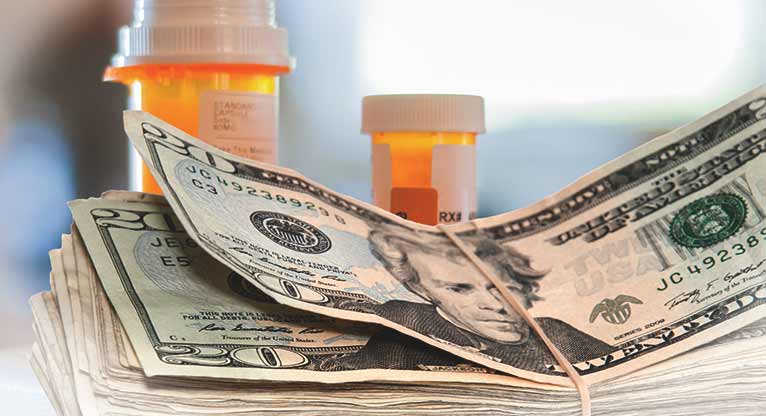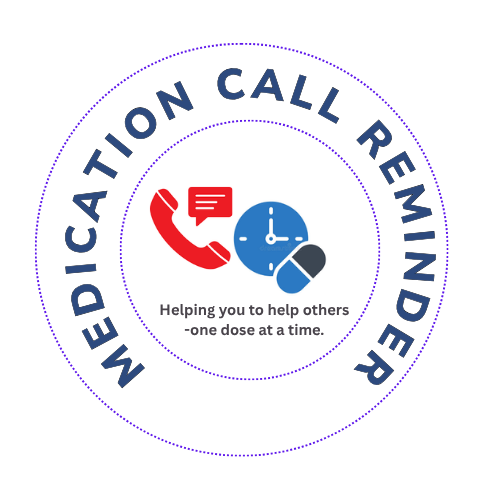
Introduction
The cost of prescription drugs is increasing at an alarming rate. According to the Blue Cross Blue Shield Association, it costs about $10,000 per year for a typical American family to cover the cost of medications. While this amount hasn’t changed much over time, the price of individual drugs (and even some brand-name drugs) has increased significantly.
Why you shouldn’t pay full price.
For most people, paying full price for prescription drugs isn’t a good idea. The average bill for an insured person’s medication is $80 per month, but your costs could be far lower depending on the amount of your deductible or copayment. You can save even more if you have a high-deductible health plan (HDHP).
A 2018 study by CVS Caremark showed that 64 percent of Americans with health insurance had an HDHP in 2018, compared to just 20 percent in 2010. That means there’s a good chance that you’ll save money by purchasing generic drugs instead of their brand-name counterparts—even at Walmart!
If your prescription costs are too high after taking advantage of all these tips and tricks, consider switching to another pharmacy where that might offer better prices on medications or generics—it’s worth asking around!
Some tips on saving money.
Some tips on saving money.
- Check your insurance coverage. This is an obvious step, but it’s important to understand how much a prescription drug costs your insurance will cover. Don’t be afraid to ask questions and find out what you need to do if you want a prescription filled at the pharmacy counter instead of having it delivered through an online service or mail-order program offered by your pharmacy.
- Ask for generic alternatives when possible, especially first-time prescriptions for long-term medications (e.g., blood pressure medications). You might also ask about over-the-counter treatments that have similar benefits and are less expensive than branded medication options; some pharmacies offer these as well as traditional prescriptions so always ask!
- Look into alternative treatments for conditions such as high cholesterol or diabetes that may not be covered by insurance but might help lower risk factors associated with those conditions without needing new drugs every month (or year!). Your doctor can advise on this type of treatment plan depending upon your situation; there are many nonpharmaceutical options available today including lifestyle changes like exercise/diet changes which could make all the difference in helping reduce risk factors associated with certain diseases/conditions where prevention may be key – especially given rising costs associated with medical expenses these days.”
Generic medications are usually cheaper.
Generic medications are usually cheaper. In fact, generic drugs can be up to 80% cheaper than brand-name drugs. That’s a pretty big difference! Why is this the case? Well, when a medication first comes out on the market, it’s considered “brand-name” until it goes through an FDA approval process. This means that there are no other medications that are exactly like yours (at least not yet). If another company wants their own version of your drug, they have to create something completely new and go through all the steps of getting approved by the FDA again. Meanwhile, you keep selling your product as usual with no competition—and raking in profits!
To see if a medication is generic or not: look at its name on your prescription bottle: if there’s an “R” after whatever letters or numbers appear after “NDC” then it’s likely generic; if there isn’t an “R,” then it’s probably not generic (but still possible!). You can also ask your doctor or pharmacist whether a particular drug is technically considered brand-name or generic–they’ll know more about what this means than anyone else around you!
Ask for samples
There are three ways to get free samples, and you should use them all:
- Ask your doctor. If you need a prescription, ask the doctor who prescribed it if they have any samples—they’re often willing to give them away if you ask nicely.
- Ask your pharmacist. Pharmacists often have leftover samples of various drugs, so don’t be afraid to ask! They also may be able to give advice on how much medication is needed for treatment based on their own experience with patients and with each drug in particular.
- Ask your insurance provider for samples. If your insurance benefits cover prescriptions but only allow a certain number per month or year (or even allow the purchase of generic or brand-name medications), there is usually no way around this limit except through obtaining free sample packs from pharmaceutical companies themselves as well as through asking directly at pharmacies like Walgreens or CVS where they might also be available (though not always).
Consider alternative treatments.
Alternative treatments are the next best thing to prescription drugs and can help you avoid their cost. If your doctor prescribes a medication, ask about alternative treatments for the same condition that may not require a prescription. For example, if you need to take medication for arthritis, ask if there’s another way to treat your symptoms without taking an expensive drug or undergoing surgery.
If your doctor decides that an alternative treatment is right for you, work with him or her to find out whether it’s covered by your insurance plan (and what percentage of its cost will be covered). You might also have access to other resources that can help you afford the treatment—such as charity organizations or government subsidies—so make sure you look into those options as well before making any decisions about which course of action might be best for your situation.
Use medication adherence tools and services to avoid waste.
When you use medication adherence tools and services, you can avoid waste, stay on track for your treatment plan, and manage healthcare costs.
Some of the most effective ways to prevent prescription drug waste are simple:
- Take the medications as prescribed by your doctor.
- Use medication adherence tools and services when possible.
Comparison shop for medication.
- Compare prices at different pharmacies.
- Compare the cost of different medications.
- Compare the cost of different brands.
- Compare the cost of different generic medications.
- Compare the cost of medication combinations (e.g., a drug combined with another type of medication).
- Compare the cost of brand-name medications, as well as generics that are similar in composition and purpose but less expensive than their brand counterparts
Ask about brand-name discounts at the pharmacy counter.
If you have a high-deductible plan, ask your pharmacy about discounts on brand-name medications. Sometimes these types of coupons are available for people with chronic conditions. For example, if you have asthma or diabetes and need to take medication every day, you might qualify for a discount that could save you money.
Another reason why it’s worth asking about getting a coupon may be because it’s good customer service. Pharmacies want to help their customers reduce their out-of-pocket costs so they’re likely willing to work with you on this issue if there are any options available (which is most often true).
Avoid hospitals for routine healthcare services and tests.
- Avoid hospitals for routine healthcare services and tests.
- If you have a cold or flu, stay home. If you’re not sure what kind of illness it is, call your doctor.
- Don’t go to the hospital for a sprained ankle or sore throat. You can get those things treated at an urgent care center much cheaper than at an emergency room.
- Don’t go to the hospital for a routine physical unless there are serious concerns about your health—your doctor should be able to handle that without sending you on a costly trip to an ER or urgent care center.
Healthcare costs can still be reduced when you’re uninsured or underinsured.
If you’re uninsured or underinsured, you’ll want to ask about charity care. This is a program that many hospitals offer to low-income and uninsured patients in need of medical treatment. If you qualify, it will cover the cost of most of your hospital expenses, including prescription drugs.
Free or low-cost clinics also exist across the country that offers discounted medications at no cost to those who can’t afford them otherwise. The most popular one is HealthCare Partners Pharmacy (HCPP), which has more than 100 locations across California and Nevada serving people who are at risk for certain diseases like HIV/AIDs and diabetes (and even those who don’t have insurance). HCPP’s website has an online search tool so you can find a pharmacy near you—and if there isn’t one in your area yet, they’ll work with local pharmacies to start one up!
Another option is government assistance programs like Medicaid or Medicare Part D for seniors over 65 years old; both have great discounts on prescription drugs as well as specialty programs like mail-order prescriptions if needed by older adults who live alone or have difficulty traveling long distances due to age limitations.”
Medication call reminders can help you keep up with your regimen.
Medication call reminders can help you keep up with your regimen. Medication call reminders can be used to remind patients of their medication schedule and when to take their medication. These services are offered at many pharmacies in the United States, or you can request one from your doctor’s office. If you use a smartphone app, there are several apps that work with this feature so that you don’t have to manually enter information about your medications every time you visit the pharmacy or doctor’s office.
Many insurance companies cover this service as an additional benefit for those enrolled in their plans through an HRA (health reimbursement account) or HSA (health savings account).
Patient assistance programs may be able to help with drug costs.
If you have a limited income and can’t afford the cost of your prescription, a patient assistance program may be able to help.
A patient assistance program is a free or low-cost way to obtain prescribed medications that are not covered by insurance. The government has created these programs specifically for those who have limited resources and no insurance coverage for their medications. Patient assistance programs are funded through donations made by pharmaceutical companies, as well as other organizations such as the American Cancer Society (ACS).
Medication management can improve health outcomes and lower costs.
Medication management can help you get the most out of your medications. If you take your medication as prescribed and don’t compromise on that, you’ll likely see a better health outcome.
Taking your medication as prescribed will also lower your costs by avoiding hospitalizations and costly procedures like surgery.
Non-drug treatments may be an effective low-cost alternative to medication.
If you’re looking for an alternative to medication, consider the following options.
- Acupuncture: In this treatment, the acupuncturist inserts needles into specific points on your body. This is thought to improve circulation and reduce inflammation in your body’s tissues. The effectiveness of acupuncture can vary quite a bit depending on who performs it, but it may be helpful as a non-drug treatment option even if it doesn’t treat your condition effectively.
- Exercise: It might seem counterintuitive that exercise would be effective in treating pain, but exercise has been shown to decrease inflammation throughout the body while increasing blood flow and oxygen supply to tissues (which improves overall health). While exercise won’t cure your condition—and thus isn’t an ideal option if you have severe symptoms—it can provide relief from milder symptoms such as stiffness or soreness after activity.
There are some steps people can take to make prescription drugs more affordable for themselves and their families in 2023
Taking steps to control costs
There are some steps people can take to make prescription drugs more affordable for themselves and their families in 2023.
Conclusion
We hope this article has helped you understand some of the ways you can save on prescription drugs in 2023. If you have any questions about the tips or tricks we discussed, please let us know in the comments below!

0 Comments